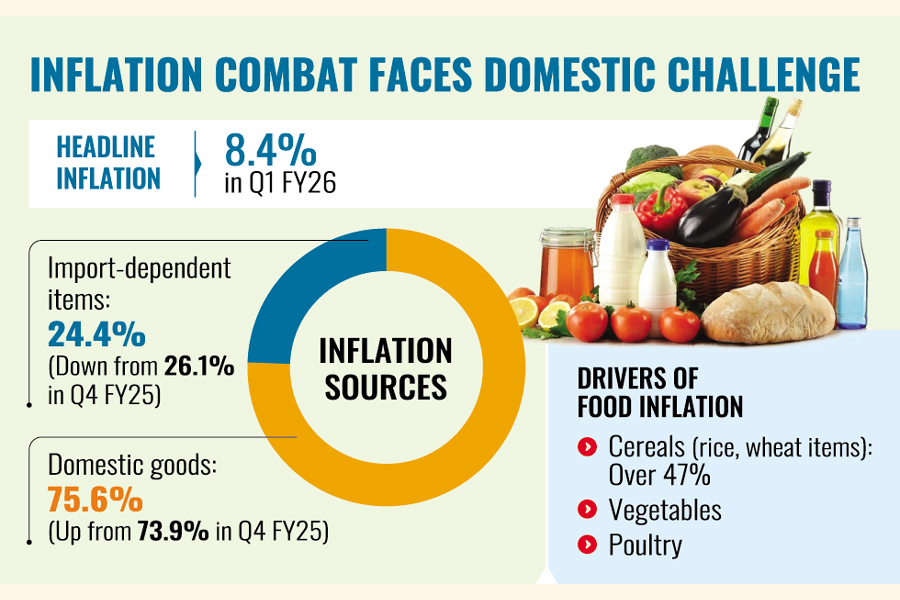
Published :
Updated :

Bangladesh's inflation profile tilted further towards domestic sources, with home-grown supply constraints and cost pressures increasingly eclipsing imported shocks, according to the Bangladesh Bank analysis on inflation for the first quarter of the fiscal year 2025-26.
Domestically produced goods accounted for 75.6 per cent of the headline inflation in this quarter, up from 73.9 per cent in the fourth quarter of FY25.
The share of import-dependent items fell to 24.4 per cent from 26.1 per cent in the previous quarter.
Inflation on a point-to-point basis stood at 8.40 per cent (average) during the quarter, down by 2.3 percentage points from the same quarter a year earlier.
Bangladesh saw a significant influence of imported goods during FY24 and some parts of FY25, when the forex market was largely volatile.
In the meantime, economists say the growing dominance of domestic factors in inflation composition highlights structural challenges in the country's supply chain and the role of some vested quarters.
Chronic inefficiencies in transport, storage, and market regulation amplified the effects of local production shocks and seasonal volatility.
Without adequate and time-befitting measures, they caution, inflation could remain high in the current fiscal year, eroding real incomes and undermining consumer confidence.
"Global price pressures are easing, but domestic costs are still rising," says Dr Zahid Hussain, a former lead economist of the World Bank's Dhaka office.
"Policy responses may need to focus more on addressing supply-side inefficiencies rather than relying solely on monetary tightening," he adds.
The goods that contributed much to the consumer price index (CPI) basket were cereals, followed by vegetables and some meat.
Cereals - chiefly rice and wheat products - remained the single largest driver of food inflation, contributing more than 47 per cent in the said quarter, according to the Bangladesh Bank data.
Their dominant weight in household consumption has kept food inflation elevated, despite softer international grain prices and a relatively stable Taka.
At the same time, the prices of vegetables and poultry - especially green chilli, onion, and Sonali chicken - rose sharply, reflecting seasonal shortfalls and logistical friction in domestic markets during this period.
Edible oil's contribution eased slightly, while that of spices and culinary essentials fell by 7.57 per cent, providing limited relief to consumers.
The retail and wholesale prices of most essentials rose during the quarter, except for potato.
By September 2025, the price of 260 of 382 CPI items recorded month-on-month increased, 31 declined, and 91 were unchanged, indicating broad-based price pressure rather than isolated spikes, the central bank study said.
jasimharoon@yahoo.com


 For all latest news, follow The Financial Express Google News channel.
For all latest news, follow The Financial Express Google News channel.